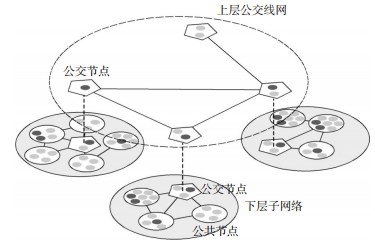| [1] |
ZHANG Jinnong, ZHOU Luqian, YANG Yuqiong, et al. Therapeutic and triage strategies for 2019 novel coronavirus disease in fever clinics[J]. The Lancet Respiratory Medicine, 2020, 8 (3): 11-12. doi: 10.1016/S2213-2600(20)30071-0
|
| [2] |
XU Zhe, SHI Lei, WANG Yijin, et al. Pathological findings of COVID-19 associated with acute respiratory distress syndrome[J]. The Lancet RespiratoryMedicine, 2020, 8(4): 420-422. doi: 10.1016/S2213-2600(20)30076-X
|
| [3] |
中国疾病预防控制中心. 新型冠状病毒肺炎流行病学特征分析[J]. 中华流行病学杂志, 2020, 41(2): 145-151. doi: 10.3760/cma.j.issn.0254-6450.2020.02.003Chinese Center for Disease Control and Prevention. The epidemiological characteristics of an outbreak of 2019 novel coronavirus diseases(COVID-19)in China[J]. Chinese Journal of Epidemiology, 2020, 41(2): 145-151. (in Chinese) doi: 10.3760/cma.j.issn.0254-6450.2020.02.003
|
| [4] |
种鹏云, 尹惠. 交通运输传播新型冠状病毒肺炎的系统动力学仿真[J]. 交通运输工程学报, 2020, 20(3): 100-109. https://www.cnki.com.cn/Article/CJFDTOTAL-JYGC202003013.htmZHONG Pengyun, YIN Hui. System dynamics simulation on spread of COVID-19 by traffic and transportation[J]. Journal of Traffic and Transportation Engineering, 2020, 20(3): 100-109. (in Chinese) https://www.cnki.com.cn/Article/CJFDTOTAL-JYGC202003013.htm
|
| [5] |
雷斌, 刘星良, 曹振, 等. COVID-19在城市轨道交通系统内的传播建模与预测[J]. 交通运输工程学报, 2020, 20(3): 139-149. https://www.cnki.com.cn/Article/CJFDTOTAL-JYGC202003017.htmLEI Bin, LIU Xingliang, CAO Zhen et al. Modeling and forecasting of COVID-19 spread in urban rail transit system[J]. Journal of Traffic and Transportation Engineering, 2020, 20 (3): 139-149. (in Chinese) https://www.cnki.com.cn/Article/CJFDTOTAL-JYGC202003017.htm
|
| [6] |
马昌喜, 王超, 郝威, 等. 突发公共卫生事件下应急定制公交线路优化[J]. 交通运输工程学报, 2020, 20(3): 89-99. https://www.cnki.com.cn/Article/CJFDTOTAL-JYGC202003012.htmMA Changxi, WANG Chao, HAO Wei, et al. Emergency customized bus route optimization under public health emergencies[J]. Journal of Traffic and Transportation Engineering, 2020, 20(03): 89-99. (in Chinese) https://www.cnki.com.cn/Article/CJFDTOTAL-JYGC202003012.htm
|
| [7] |
鲍君忠, 秦莹, 王西召, 等. 基于Logistic模型的大型邮轮疫情预测分析[J]. 交通信息与安全, 2020, 38(2): 136-142+148. https://www.cnki.com.cn/Article/CJFDTOTAL-JTJS202002020.htmBAO Junzhong, QIN Ying, WANG Xizhao, et al. A prediction and analysis of epidemic outbreaks on large cruise ships based on a logistic model[J]. Journal of Transport Information and Safety, 2020, 38(2): 136-142+148. (in Chinese) https://www.cnki.com.cn/Article/CJFDTOTAL-JTJS202002020.htm
|
| [8] |
刘文君, 何新华, 胡文发. 重大突发疫情对港口运营能力的影响研究[J]. 交通信息与安全, 2020, 38(2): 102-111+119. https://www.cnki.com.cn/Article/CJFDTOTAL-JTJS202002016.htmLIU Wenjun, HE Xinhua, HU Wenfa. Impacts of major epidemic in public health emergencies on operational capacity of ports[J]. Journal of Transport Information and Safety. 2020, 38 (2): 102-111+119. (in Chinese) https://www.cnki.com.cn/Article/CJFDTOTAL-JTJS202002016.htm
|
| [9] |
周继彪, 马昌喜, 董升, 张敏捷. 新冠肺炎疫情下城市公共交通非常规防疫策略: 以宁波市为例[J]. 中国公路学报, 2020, 33(11): 1-10.ZHOU Jibiao, MA Changxi, DONG Sheng, et al. Unconventional prevention strategies for urban public transport in the COVID-19 epidemic: taking ningbo city as a case study[J]. China Journal of Highway and Transport, 2020, 33(11): 1-10. (in Chinese)
|
| [10] |
RUAN Zhongyuan, TANG Ming, LIU Zonghua. How the contagion at links influences epidemic spreading[J]. The European Physical Journal B, 2013(86): 149. doi: 10.1140/epjb/e2013-30914-9
|
| [11] |
SONG Chaoming, QU Zehui, BLUMM N, et al. Limits of predictability in human mobility[J]. Science, 2010(327): 1018-1021. http://bjsm.bmj.com/lookup/ijlink?linkType=ABST&journalCode=sci&resid=327/5968/1018&atom=%2Fbjsports%2F45%2F16%2F1272.atom
|
| [12] |
TANG Ming, LIU Zong, LI Baowen. Epidemic spreading by objective traveling[J]. Europhys Lett, 2009(87): 18005.
|
| [13] |
阮中远. 复杂网络上的流行病传播[J]. 中国科学: 物理学、力学、天文学, 2020, 50(1): 98-117. https://www.cnki.com.cn/Article/CJFDTOTAL-JGXK202001008.htmRUAN Zhongyuan. Epidemic spreading in complex networks[J]. Scientia Sinica(Physica, Mechanica & Astronomica), 2020, 50(1): 98-117. (in Chinese) https://www.cnki.com.cn/Article/CJFDTOTAL-JGXK202001008.htm
|
| [14] |
茹小磊, 杨超, 严钢, 等. 应对突发大规模流行病的城市常规公交管控策略[J]. 中国公路学报, 2020, 33(11): 11-19. doi: 10.3969/j.issn.1001-7372.2020.11.003RU Xiaolei, YANG Chao, YAN Gang, et al. Control strategy of urban public transit in response to large-scale emergent epidemic[J]. China Journal of Highway and Transport. 2020, 33 (11): 11-19. (in Chinese) doi: 10.3969/j.issn.1001-7372.2020.11.003
|
| [15] |
COLIZZA V, PASTOR-SATORRAS R, VESPIGNANI A. Reaction-diffusion processes and metapopulation models in heterogeneous networks[J]. Nat Phys, 2007(3): 276-282. http://www.nature.com/articles/nphys560?error=cookies_not_supported&code=02f2cdd7-a776-42b1-8821-a8925e9329aa
|
| [16] |
范如国, 王奕博, 罗明, 等. 基于SEIR的新冠肺炎传播模型及拐点预测分析[J]. 电子科技大学学报, 2020, 49(3): 369-374. https://www.cnki.com.cn/Article/CJFDTOTAL-DKDX202003009.htmFAN Ruguo, WANG Yibo, LUO Ming, et al. SEIR-Based COVID-19 transmission model and inflection point prediction analysis[J]. Journal of University of Electronic Science and Technology of China, 2020, 49(3): 369-374. (in Chinese) https://www.cnki.com.cn/Article/CJFDTOTAL-DKDX202003009.htm
|
| [17] |
张宇, 田万利, 吴忠广, 等. 基于改进SEIR模型的新冠肺炎疫情沿交通线路传播机制[J]. 交通运输工程学报, 2020, 20 (3): 150-158. https://www.cnki.com.cn/Article/CJFDTOTAL-JYGC202003018.htmZHANG Yu, TIAN Wanli, WU Zhongguang, et al. Transmission mechanism of COVID-19 epidemic along traffic routes based on improved SEIR model[J]. Journal of Traffic and Transportation Engineering, 2020, 20(3): 150-158. (in Chinese) https://www.cnki.com.cn/Article/CJFDTOTAL-JYGC202003018.htm
|
| [18] |
SMALL M, TSK C K. Small world and scale free model of transmission of SARS[J]. Intertional Journal of Bifurcation and Chaos, 2005, 15(5): 1745-1755. doi: 10.1142/S0218127405012776
|
| [19] |
倪顺江. 基于复杂网络理论的病毒动力学建模与研究[D]. 北京: 清华大学, 2009.NI Shunjiang. Research on modeling of infectious disease spreading based on complex network theory[D]. Beijing: Tsinghua University, 2009. (in Chinese)
|
| [20] |
缪超. 具有多感染率网络中的传播动力学及节点免疫策略[D]. 南京: 南京邮电大学, 2018.MIU Chao. Epidemic dynamics and node immunization strategy in a network with multiple infection rates[D]. Nanjing: Nanjing University of Posts and Telecommunications, 2018. (in Chinese)
|





 下载:
下载:











